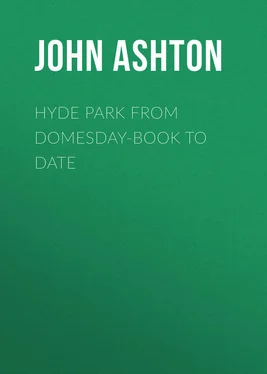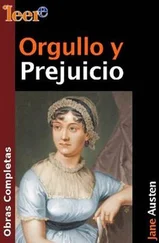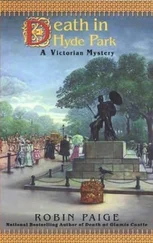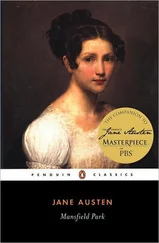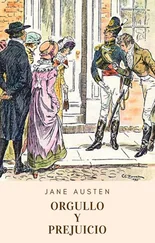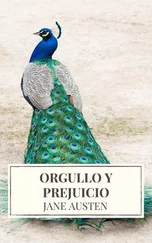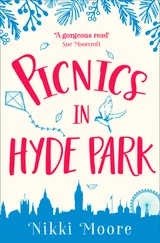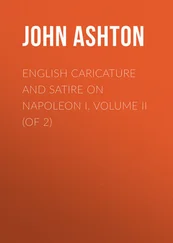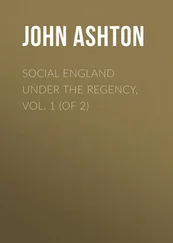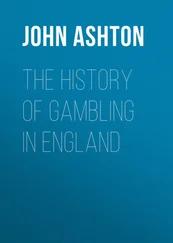John Ashton - Hyde Park from Domesday-book to Date
Здесь есть возможность читать онлайн «John Ashton - Hyde Park from Domesday-book to Date» — ознакомительный отрывок электронной книги совершенно бесплатно, а после прочтения отрывка купить полную версию. В некоторых случаях можно слушать аудио, скачать через торрент в формате fb2 и присутствует краткое содержание. Жанр: foreign_antique, foreign_prose, на английском языке. Описание произведения, (предисловие) а так же отзывы посетителей доступны на портале библиотеки ЛибКат.
- Название:Hyde Park from Domesday-book to Date
- Автор:
- Жанр:
- Год:неизвестен
- ISBN:нет данных
- Рейтинг книги:3 / 5. Голосов: 1
-
Избранное:Добавить в избранное
- Отзывы:
-
Ваша оценка:
- 60
- 1
- 2
- 3
- 4
- 5
Hyde Park from Domesday-book to Date: краткое содержание, описание и аннотация
Предлагаем к чтению аннотацию, описание, краткое содержание или предисловие (зависит от того, что написал сам автор книги «Hyde Park from Domesday-book to Date»). Если вы не нашли необходимую информацию о книге — напишите в комментариях, мы постараемся отыскать её.
Hyde Park from Domesday-book to Date — читать онлайн ознакомительный отрывок
Ниже представлен текст книги, разбитый по страницам. Система сохранения места последней прочитанной страницы, позволяет с удобством читать онлайн бесплатно книгу «Hyde Park from Domesday-book to Date», без необходимости каждый раз заново искать на чём Вы остановились. Поставьте закладку, и сможете в любой момент перейти на страницу, на которой закончили чтение.
Интервал:
Закладка:
The last duel I find connected with Hyde Park, but was fought at Chalk Farm, is the following: “April 6th, 1803. This morning, as Lieutenant-Colonel Montgomery and Captain Macnamara were riding in Hyde Park, each followed by a Newfoundland dog, the dogs fought; in consequence of which the gentlemen quarrelled, and used such irritating language to each other, that a change of addresses followed, with an appointment to meet at 7 o’clock the same evening near Primrose Hill; the consequences of which proved fatal.”
Lord Burghersh, in giving evidence before the coroner’s jury, spoke of the triviality of the offence given and received by these two hot-headed idiots. He said, “On coming out of St. James’s Park on Wednesday afternoon, he saw a number of horsemen, and Colonel Montgomery among them; he rode up to him; at that time he was about twenty yards from the railing next Hyde Park Gate. On one side of Colonel Montgomery was a gentleman on horseback, whom he believed was Captain Macnamara. The first words he heard were uttered by Colonel Montgomery, who said: ‘Well, Sir, and I will repeat what I said, if your dog attacks mine, I will knock him down.’ To this, Captain Macnamara replied, ‘Well, Sir, but I conceive the language you hold is arrogant, and not to be pardoned.’ Colonel Montgomery said: ‘This is not the proper place to argue the matter; if you feel yourself injured, and wish for satisfaction, you know where to find me.’ ”
Montgomery fell, mortally wounded, and Macnamara was tried at the Old Bailey, on 22nd March, for manslaughter. Lords Hood, Nelson, Hotham, and Minto, and a great number of highly respectable gentlemen gave him an excellent character, and, in spite of the judge’s summing up, the jury went against his directions, and acquitted the Captain.
Larwood says that the last affair of honour which took place in Hyde Park was in April, 1817, when the Hon. H. C. and a Mr. John T. fired twice at each other and were both wounded; but, as I cannot verify this duel, I give it under all reserve.
The last fracas in Hyde Park that I can trace took place on July 12th, 1870, between Majors Gordon and Kane, retired officers in the Indian service, the combatants belabouring each other with their sticks, in retaliation for an affront alleged to have been offered at a private dinner-table.
CHAPTER VI
Skating on the ponds and Serpentine – The Ring – Many notices thereof – Fireworks in the Park – Bad roads therein, and accidents caused thereby – Regulations in the time of Queen Anne – Making the drive – Riding in the Park.
Soon after the opening of the Park to the public, the water therein was utilized, during a hard frost, for skating, as Pepys tells us in his diary: “Dec. 8th, 1662. Then into the Parke to see them slide with their skeates, which is very pretty. Dec. 15th. Up and to my Lord’s, and thence to the Duke, 28 28 The Duke of York, afterwards James II.
and followed him into the Parke, where, though the ice was broken and dangerous, yet he would go slide upon his scates, which I did not like, but he slides very well.”
This must have been, in all probability, on one of the pools in the park – as it was not till 1730 that Queen Caroline, wife of George II., began to make “the Serpentine,” as the lake in Hyde Park is called. After that was finished, and a good hard frost came, so that it was frozen hard, it was the resort of the few of the upper classes who could skate. I do not say it was reserved for them, but in those days there were no cheap omnibuses from Whitechapel, and London was but a very small portion of its present overgrown bulk. At all events, in the last century, people could skate without overcrowding, or annoyance from bands of roughs, such as obtain at the present day, as is well shown in the accompanying illustration of “Winter Amusement, a view in Hyde Park, from the Sluice at the East End, 1787.” Royalty, in the person of George, Prince of Wales, did not object to disport itself on the lake, and not being overcrowded, we never hear of the ice breaking, or lives being lost until 1794, when a building was erected on the site of the present Receiving House of the Royal Humane Society, wherein those suffering from injuries or immersion could be attended to.
But the chief use of the Park as a place of fashionable relaxation was driving within its precincts, and especially in the “Ring,” a small enclosure, which is shown in the 1747 map, just where is the letter “A” in “Park.” The practice seems to have obtained as soon as the Park was thrown open to the public, and we have already seen how, in the Commonwealth time, a charge was made for the entrance both of carriages and horses. On May Day, however, was the finest show. Possibly that then, as now, the coaches were renovated, and the horses had new harness. We learn something of this in a very serious tract, published in 1655, with a very long title, a portion of which is: A serious Letter sent by a Private Christian to the Lady Consideration, the first day of May, 1655 , which commences thus: —
“Lady, I am informed fine Mrs. Dust , Madam Spot , and my Lady Paint , are to meet at Hide-Park this afternoon; much of pride will be there: if you will please to take an Hackney, I shall wait upon your Honour in a private way: But, pray, let us not be seen among the foolish ones, that ride round, round,
wheeling of their coaches about and about, laying of the naked breast, neck and shoulders over the boot, with a Lemon and a Fan, shaking it at young Mrs. Poppet , crying, Madam your humble servant, your very humble servant , while some are doing worse. Young Sir William Spruce , Mounseir Flash , and the Lord Gallant , will be all on horseback,” etc.
But the gossiping pages of Pepys furnish us with a good view of Hyde Park, and I have, therefore, selected some quotations as illustrative.
“April 30, 1661. I am sorry that I am not at London, to be at Hide-Parke to-morrow, among the great gallants and ladies, which will be very fine.
“May 7, 1662. Thence to Paul’s Church Yard; where seeing my Ladys Sandwich and Carteret, and my wife (who, this day, made a visit for the first time to my Lady Carteret) come by coach, and going to Hide-Parke, I was resolved to follow them; and so went to Mrs. Turner’s: and thence found her out at the Theatre; where I saw the last act of the ‘Knight of the burning Pestle,’ which pleased me not at all. And so, after the play done, she and The. Turner and Mrs. Lucin and I, in her coach to the Parke; and there found them out, and spoke to them; and observed many fine ladies, and staid till all were gone almost.
“April 4, 1663. After dinner to Hide Parke: my aunt, Mrs. Wight and I in one coach, and all the rest of the women in Mr. Turner’s… At the Parke was the King, and in another coach my Lady Castlemaine, they greeting one another at every tour. 29 29 Whenever “the tour” is mentioned, the “Ring” is meant which was the most fashionable part.
“April 18, 1664. To Hide Parke, where I had not been since last year; where I saw the King with his periwigg, but not altered at all; and my Lady Castlemaine in a coach by herself, in yellow satin and a pinner on; and many brave persons. And myself being in a hackney and full of people, was ashamed to be seen by the world, many of them knowing me.
“April 22, 1664. I home, and by coach to Mrs. Turner’s and there got something to eat, and thence, after reading part of a good play, Mrs. The., my wife and I, in their coach to Hide Parke, where great plenty of gallants, and pleasant it was, only for the dust. Here I saw Mrs. Bendy, my Lady Spillman’s faire daughter that was, who continues yet very handsome. Many others I saw with great content, and so home.
Читать дальшеИнтервал:
Закладка:
Похожие книги на «Hyde Park from Domesday-book to Date»
Представляем Вашему вниманию похожие книги на «Hyde Park from Domesday-book to Date» списком для выбора. Мы отобрали схожую по названию и смыслу литературу в надежде предоставить читателям больше вариантов отыскать новые, интересные, ещё непрочитанные произведения.
Обсуждение, отзывы о книге «Hyde Park from Domesday-book to Date» и просто собственные мнения читателей. Оставьте ваши комментарии, напишите, что Вы думаете о произведении, его смысле или главных героях. Укажите что конкретно понравилось, а что нет, и почему Вы так считаете.
